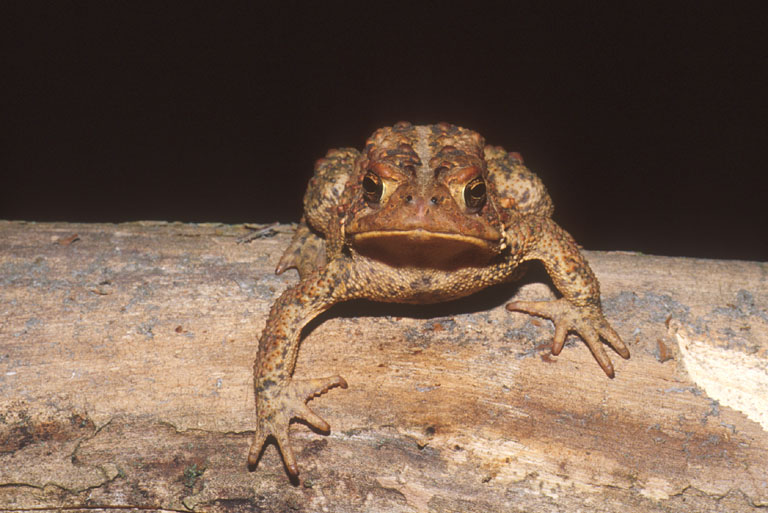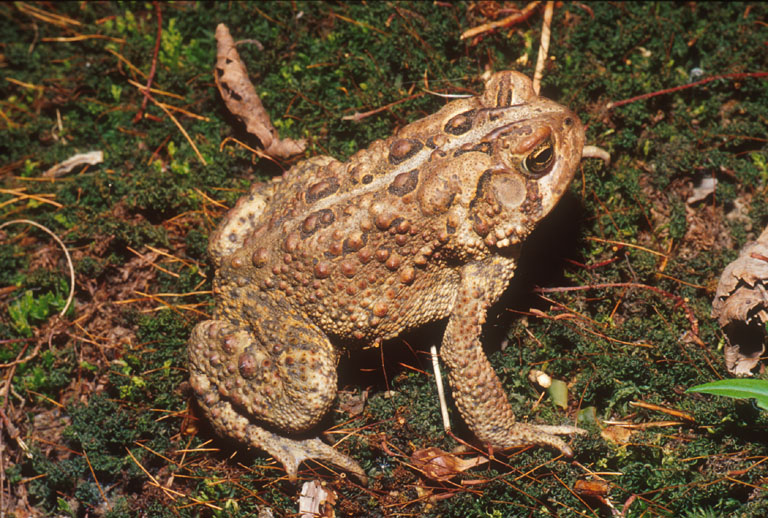Adaptations
Bufo
americanus’ are nocturnal. This is an important adaptation
because they are less susceptible to being ingested by predators
if they are in the dark. However, they are more vulnerable
to being run over by cars or bicycles at night. Being nocturnal
has generally helped the species adapt to its environment. They
are also semi-camouflaged. Their varying colors help them
blend in with their environment. The toad moves via extending
its hind legs; however, since they are relatively short, the
toad has a weak ability to jump high.
To aid in protection from
predators, the toad secretes bufotoxins from the two paratoid
glands located behind each ear (the circular structure behind
each eye). This milky toxin is used to ward off predators
because of its vile odor and taste. The secretion can even
cause some predators distress if ingested, for example dogs. Another
defense against predators is seen when the female lays her eggs.
Once the female toad releases them, the eggs are exposed to the harms of the
water, including toxins and predators, like fish. For this
reason, the female frogs have adapted to finding ephemeral ponds
(those that do not hold water year-round). These ponds do not
have fish and, therefore, the risk is reduced of these developing
eggs being eaten by fish.
Because the toad has highly
permeable skin, chemicals in the soil (pesticides and heavy
metals) can penetrate the skin and enter the toad’s body.
However, the American Toad has yet to adapt a way to decrease
accumulation of harmful chemicals in its body. Due to
increasing pesticide levels, the toad populations are decreasing
in many areas.
To learn more about the American Toad, visit amphibiaweb.org

